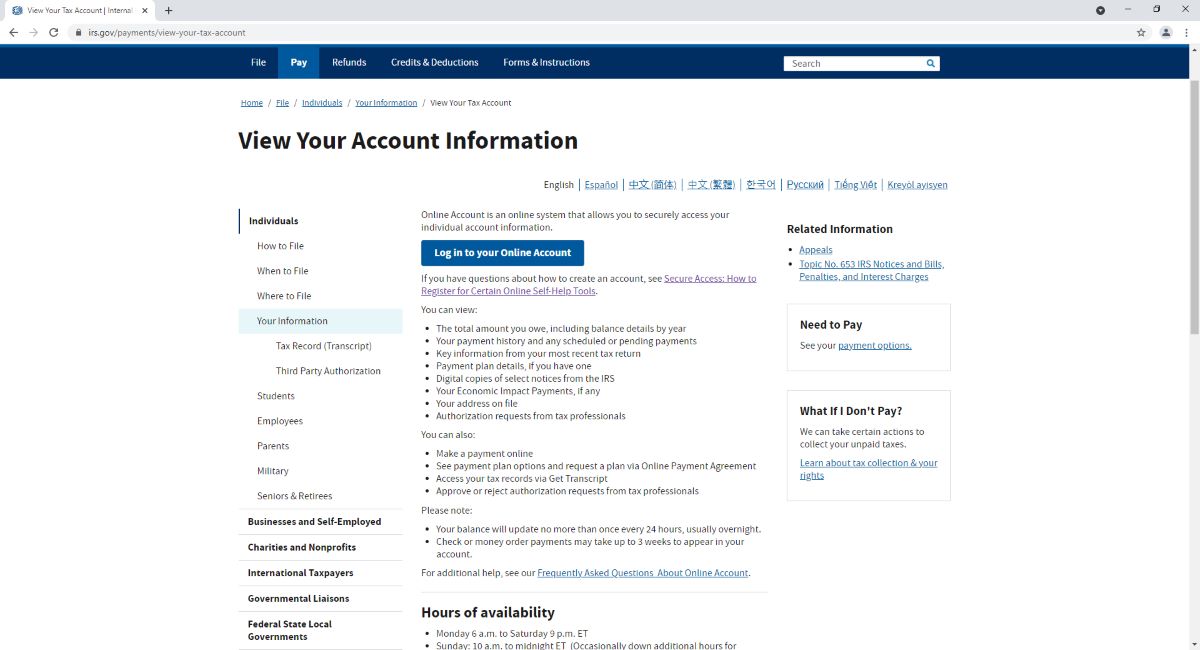

Finance
What Is Write Up In Accounting
Published: October 10, 2023
Discover the importance of write up in accounting and its role in financial management. Gain a deeper understanding of how finance and write up procedures go hand in hand.
(Many of the links in this article redirect to a specific reviewed product. Your purchase of these products through affiliate links helps to generate commission for LiveWell, at no extra cost. Learn more)
Table of Contents
Introduction
In the field of accounting, a crucial task that is often performed is the “write up.” This term refers to the process of adjusting and correcting financial records to accurately reflect the true financial position of a company. Write up plays a significant role in ensuring the accuracy and integrity of financial statements and reports.
During the course of business operations, various events and transactions occur that can impact the financial records. These can include depreciation of assets, adjustments for prepayments, accruals, and corrections to errors or omissions. Without proper write up procedures, financial statements may not provide an accurate representation of a company’s financial health.
The main goal of write up in accounting is to correct, rectify, and update inaccurate or incomplete financial information. By making these adjustments, the financial reports produced will be more reliable and useful for decision-making purposes.
Write up is typically performed by experienced accountants or financial professionals who possess a deep understanding of accounting regulations and standards. It involves a series of steps to ensure that the financial records accurately reflect the true state of the company’s finances.
Throughout this article, we will explore the definition of write up in accounting, its purpose, the process involved, examples to illustrate its application, the importance of performing write up, and the challenges that may arise when performing this task.
Definition of Write Up in Accounting
Write up in accounting refers to the process of adjusting and correcting financial records to accurately reflect the true financial position of a company. It involves making necessary adjustments to the general ledger, trial balance, and other accounting records to ensure that they accurately represent the financial transactions and events that have occurred.
Write up is primarily used to rectify errors, omissions, and discrepancies in financial statements and reports. It enables accountants and financial professionals to correct any inaccuracies and provide a more accurate and reliable picture of a company’s financial health.
Write up involves adjusting various financial elements, such as revenue, expenses, assets, and liabilities. For example, if a company mistakenly recorded an expense in the wrong accounting period, a write up would be performed to correct this error and reflect the expense in the correct period.
Additionally, write up may involve adjusting the value of assets or liabilities to reflect their fair market value. This is particularly important when dealing with assets such as property, plant, and equipment. By revaluing these assets, a more accurate picture of a company’s net worth can be obtained.
Write up in accounting is guided by accounting principles and standards, such as the Generally Accepted Accounting Principles (GAAP) or International Financial Reporting Standards (IFRS). These frameworks provide guidelines on how to correctly record and disclose financial transactions and events. Adhering to these standards ensures that the write up process is consistent and in line with industry best practices.
It is important to note that write up should be performed regularly to maintain the accuracy and integrity of financial records. This ensures that the financial statements and reports generated are reliable and can be used by management, investors, and other stakeholders to make informed decisions.
In summary, write up in accounting refers to the process of adjusting and correcting financial records to accurately reflect a company’s true financial position. It involves rectifying errors, adjusting values, and adhering to accounting principles to ensure the accuracy and reliability of financial statements and reports.
Purpose of Write Up
The purpose of write up in accounting is to ensure the accuracy and reliability of financial records. It serves several important functions that are vital for the effective management and decision-making within a company:
1. Accuracy of Financial Statements: The primary purpose of write up is to correct errors, omissions, and inaccuracies in financial records. By performing write up, accountants can ensure that the financial statements accurately reflect the company’s financial position, performance, and cash flows. This is essential for providing reliable information to stakeholders, such as investors, lenders, and regulators.
2. Compliance with Accounting Standards: Write up is also necessary to comply with accounting standards and principles. It ensures that financial transactions and events are recorded and presented in accordance with the Generally Accepted Accounting Principles (GAAP) or International Financial Reporting Standards (IFRS). By adhering to these standards, companies can provide transparent and comparable financial information.
3. Informed Decision-making: Accurate financial records are crucial for making informed business decisions. Write up allows management to have a clear and accurate view of the company’s financial position, enabling them to assess profitability, identify areas for improvement, and make strategic decisions. It also helps in evaluating the performance of different departments and business segments.
4. Trust and Credibility: Reliable financial records build trust and credibility with stakeholders. By ensuring the accuracy of financial statements through write up, companies demonstrate their commitment to transparency and ethical financial reporting. This enhances the confidence of investors, creditors, and other parties in the company.
5. Avoid Legal and Regulatory Issues: Inaccurate financial records can lead to legal and regulatory issues. Write up helps in minimizing the risk of non-compliance with accounting and tax regulations. By maintaining accurate financial records, companies can avoid penalties, audits, and potential legal disputes.
6. Facilitate Auditing Processes: During the audit process, write up can facilitate the work of external auditors. Well-maintained and accurate financial records make the auditing process smoother and more efficient. It provides auditors with confidence in the reliability of the company’s financial statements.
Overall, the purpose of write up in accounting is to ensure the accuracy and reliability of financial records, comply with accounting standards, support informed decision-making, build trust with stakeholders, prevent legal and regulatory issues, and facilitate external audits. By performing write up diligently, companies can maintain financial transparency and make sound financial decisions for their long-term success.
Process of Write Up
The process of write up in accounting involves several steps to adjust and correct financial records. While the specific process may vary depending on the company’s size, industry, and accounting practices, the general steps are as follows:
1. Identify and Review: The first step in the write-up process is to identify the areas that require adjustment or correction. This may involve reviewing financial statements, trial balances, general ledgers, and other relevant documents to identify errors, omissions, or inconsistencies.
2. Collect Supporting Documentation: Once the issues have been identified, the next step is to gather the necessary supporting documentation to validate the adjustments. This may include invoices, receipts, bank statements, contracts, or any other relevant documents that provide evidence for the required corrections.
3. Analyze and Determine Adjustments: After collecting the supporting documentation, the accountant or financial professional must analyze the information to determine the precise adjustments needed. This may involve recalculating balances, reclassifying transactions, allocating costs, or making other necessary adjustments to reflect the accurate financial position.
4. Record Adjustments: Once the adjustments have been determined, they need to be recorded in the appropriate accounting records. This may include making journal entries, updating the general ledger, and adjusting the trial balance and subsidiary ledgers to reflect the changes. The adjustments should be clearly documented, including the reasons for the adjustment and the supporting evidence.
5. Reconcile Balances: After recording the adjustments, it is essential to reconcile balances to ensure accuracy. This involves comparing account balances with supporting documentation, such as bank statements or vendor invoices, to ensure that the adjustments have been properly reflected in the financial records.
6. Generate Revised Financial Statements: Once the adjustments have been made and balances reconciled, revised financial statements can be generated. These statements should accurately reflect the company’s financial position, performance, and cash flows after the write-up adjustments.
7. Review and Verify: The final step in the write-up process is to review and verify the revised financial statements. This involves carefully examining the statements to ensure that they accurately reflect the adjustments made and comply with accounting standards. The financial statements should be reviewed for any potential errors or inconsistencies before being finalized.
It is important to note that the write-up process should be performed regularly to maintain the accuracy and integrity of financial records. By diligently following these steps, companies can ensure that their financial statements provide a true and reliable representation of their financial position and performance.
Difference Between Write Up and Write Off
While both write up and write off are terms commonly used in accounting, they have distinct meanings and purposes. Understanding the difference between these two concepts is essential for accurate financial reporting. Here are the key differences between write up and write off:
Write Up:
Write up, as discussed earlier, refers to the process of adjusting and correcting financial records to accurately reflect the true financial position of a company. It involves making necessary adjustments to the general ledger, trial balance, and other accounting records to ensure the accuracy and reliability of financial statements. Write up primarily focuses on rectifying errors, omissions, and inaccuracies in financial records. It helps provide a more accurate and reliable picture of a company’s financial health.
The purpose of write up is to ensure that the financial statements accurately represent the company’s financial transactions and events. It involves adjusting various financial elements, such as revenue, expenses, assets, and liabilities. Write up is guided by accounting principles and standards, such as the Generally Accepted Accounting Principles (GAAP) or International Financial Reporting Standards (IFRS).
Write Off:
Write off, on the other hand, relates to the removal of an asset or a liability from the company’s books. It is the process of recognizing that an asset or liability no longer holds any economic value or is irrecoverable. Write off typically occurs when an asset becomes obsolete, damaged beyond repair, or when a debtor cannot repay a loan or debt.
Write off is an accounting adjustment that reduces the value of an asset or removes a liability from the company’s balance sheet. It is necessary to accurately reflect the financial position of the company, taking into account any unrecoverable or non-performing assets or bad debts. Write off is often accompanied by making an offsetting entry, such as recognizing an expense or reducing the related reserve or allowance account.
In summary, the key difference between write up and write off is that write up involves adjusting and correcting financial records to ensure accuracy and reliability, while write off refers to the removal of an asset or liability when it no longer holds economic value or becomes irrecoverable. Write up focuses on providing a true and accurate representation of the company’s financial position, whereas write off is concerned with recognizing and accounting for assets or liabilities that are deemed unrecoverable or non-performing.
Examples of Write Up in Accounting
Write up in accounting can be applied in various situations to ensure the accuracy and reliability of financial records. Here are some examples of write up in accounting:
1. Inventory Write Up: A company may conduct a physical inventory count and find that the recorded inventory value is higher than the actual inventory on hand. In this case, a write up is necessary to adjust the inventory value to its correct amount based on the physical count.
2. Depreciation Write Up: If a company determines that the recorded depreciation expense for an asset has been underestimated, a write up is required to increase the accumulated depreciation and adjust the asset’s carrying value to reflect its actual depreciation.
3. Revenue Write Up: In cases where revenue has been understated or omitted from the financial records, a write up is performed to adjust the revenue figures and ensure that it accurately reflects the company’s actual sales and income.
4. Prepaid Expenses Write Up: Prepaid expenses refer to expenses paid in advance but have not been fully utilized or consumed. A write up is necessary to recognize the expenses and allocate them properly to the relevant accounting periods.
5. Insurance Write Up: If a company receives insurance proceeds due to a loss or damage to its assets, a write up is done to reflect the recovery and adjust the asset’s value accordingly.
6. Asset Revaluation Write Up: A company may choose to revalue its assets, such as land, buildings, or machinery, to reflect their current fair market value. This write up adjusts the asset’s carrying value and provides a more accurate representation of the company’s net worth.
7. Correction of Errors or Omissions: Write up is often used to correct errors or omissions in financial records. For example, if a transaction was accidentally recorded in the wrong account or omitted altogether, a write up is performed to rectify the error and ensure the accuracy of the financial statements.
These examples highlight the diverse applications of write up in accounting. They showcase how write up is used to correct inaccuracies, adjust values, and ensure the financial records accurately represent the true financial position and performance of a company. Performing write up diligently is crucial for producing reliable financial statements that can be used for decision-making and external reporting purposes.
Importance of Write Up in Accounting
Write up is of utmost importance in accounting as it serves several crucial purposes that contribute to the accuracy and reliability of financial records. Here are key reasons highlighting the importance of write up in accounting:
1. Accuracy of Financial Statements: Write up ensures the accuracy of financial statements by correcting errors, omissions, and discrepancies. This accuracy is essential for stakeholders, including investors, lenders, and regulatory bodies, to make informed decisions based on reliable financial information.
2. Compliance with Accounting Standards: Write up helps companies comply with accounting standards such as the Generally Accepted Accounting Principles (GAAP) or International Financial Reporting Standards (IFRS). By following these standards, companies can ensure the consistency and comparability of their financial statements, enhancing transparency and trust.
3. Informed Decision-making: Accurate financial records resulting from write up enable management to make informed business decisions. Clear and reliable financial information assists in evaluating the company’s financial performance, identifying areas for improvement, and formulating effective strategies for growth and profitability.
4. Investor Confidence: Reliable financial records generated through write up build investor confidence. Investors rely on accurate financial statements to assess the company’s financial health, profitability, and potential risks. Transparent financial reporting boosts investor trust and may attract additional investment opportunities.
5. Legal and Regulatory Compliance: Write up helps companies comply with legal and regulatory requirements. Accurate financial records can prevent legal issues, penalties, audits, and regulatory non-compliance that may arise due to discrepancies or inaccuracies in financial reporting.
6. Audit Facilitation: Performing write up regularly makes the auditing process smoother and more efficient. Well-maintained financial records help external auditors verify the accuracy and reliability of reported financial information, providing assurance to shareholders and other stakeholders.
7. Enhanced Financial Transparency: Write up promotes financial transparency, providing a clear and comprehensive view of a company’s financial position. Transparent financial reporting builds trust among stakeholders, including employees, customers, and suppliers, further strengthening relationships and fostering a positive reputation.
8. Better Cost Management: Write up allows companies to accurately reflect the value of assets, such as inventory or fixed assets, preventing overstatement or understatement. This helps in effective cost management, improving decision-making related to pricing, production, and investment in assets.
In summary, write up plays a pivotal role in ensuring the accuracy, reliability, and compliance of financial records. It facilitates informed decision-making, builds investor confidence, promotes legal and regulatory compliance, facilitates the auditing process, enhances financial transparency, and aids in better cost management. By performing write up diligently, companies can maintain financial integrity and provide dependable financial information for stakeholders to make informed decisions.
Challenges in Performing Write Up
While write up is an essential process in accounting, it does come with its fair share of challenges. These challenges can pose obstacles in performing write up accurately and efficiently. Here are some common challenges faced during the write up process:
1. Data Accuracy: Obtaining accurate and reliable data is crucial for a successful write up. Incomplete or incorrect information can lead to inaccurate adjustments, potentially impacting the overall integrity of financial records. Data accuracy challenges arise from errors in source documents, discrepancies in records, or lack of proper documentation.
2. Data Complexity: Dealing with complex accounting transactions can present challenges during write up. Complex transactions, such as mergers and acquisitions, intercompany transactions, or foreign currency conversions, require a deep understanding of accounting principles and expertise to accurately adjust the financial records.
3. Time Constraints: Time constraints can be a challenge, especially when performing write up during busy periods or near financial reporting deadlines. Accountants and financial professionals may face pressure to complete write up within a limited timeframe, potentially leading to increased errors or oversights.
4. Changing Regulations and Standards: The constantly evolving landscape of accounting regulations and standards can pose challenges in performing write up. Accountants need to stay updated with changes in accounting rules and ensure compliance with new standards, which may require additional training and resources.
5. Complex Accounting Software: Many companies use accounting software to manage their financial records, which can sometimes be complex and challenging to navigate. Accountants need to be familiar with the software and its functionalities to accurately perform write up tasks.
6. Subjectivity in Valuations: When performing write up, there can be subjectivity involved in valuing certain assets or liabilities. Determining fair market value, estimating depreciation, or assessing impairment can be subjective processes, leading to potential challenges in accurately valuing these items.
7. Internal Control Weaknesses: Weak internal controls within an organization can present challenges in performing write up. Without proper control measures, there is a risk of errors, unauthorized adjustments, or fraud impacting the accuracy and reliability of financial records.
8. Interdepartmental Coordination: Write up often requires collaboration and coordination with various departments within an organization. Challenges may arise in ensuring effective communication, obtaining necessary information, and aligning the write-up process with departmental workflows.
Despite these challenges, organizations can overcome them by implementing robust systems, ensuring data accuracy and reliability, providing adequate training to employees, and maintaining a strong internal control environment. By addressing these challenges, companies can mitigate risks and enhance the accuracy and integrity of their financial records through effective write up processes.
Conclusion
Write up plays a vital role in the field of accounting by ensuring the accuracy, reliability, and integrity of financial records. It involves the process of adjusting and correcting financial information to reflect the true financial position of a company. Write up is essential for producing accurate financial statements, complying with accounting standards, supporting informed decision-making, and building trust with stakeholders.
The process of write up involves identifying and reviewing areas that require adjustment, collecting supporting documentation, analyzing and determining adjustments, recording them in the accounting records, reconciling balances, and generating revised financial statements. By diligently following these steps, financial professionals can provide transparent and reliable financial information that is crucial for management, investors, lenders, and regulatory bodies.
Examples of write up in accounting include inventory adjustments, depreciation corrections, revenue adjustments, prepaid expenses, insurance claims, and asset revaluations. By performing these write up tasks, companies can accurately represent their financial position, performance, and cash flows in the financial statements.
While write up is essential, it is not without its challenges. These challenges include data accuracy, data complexity, time constraints, changing regulations, complex accounting software, subjectivity in valuations, internal control weaknesses, and interdepartmental coordination. Tackling these challenges requires proper training, updated knowledge, robust systems, and effective internal controls to ensure the accuracy and reliability of financial records.
In conclusion, write up is a crucial process in accounting that facilitates accurate financial reporting, compliance with standards, informed decision-making, and trust-building among stakeholders. By performing write up diligently and overcoming the challenges, companies can ensure the integrity of their financial records and provide reliable financial information for effective management and decision-making.














